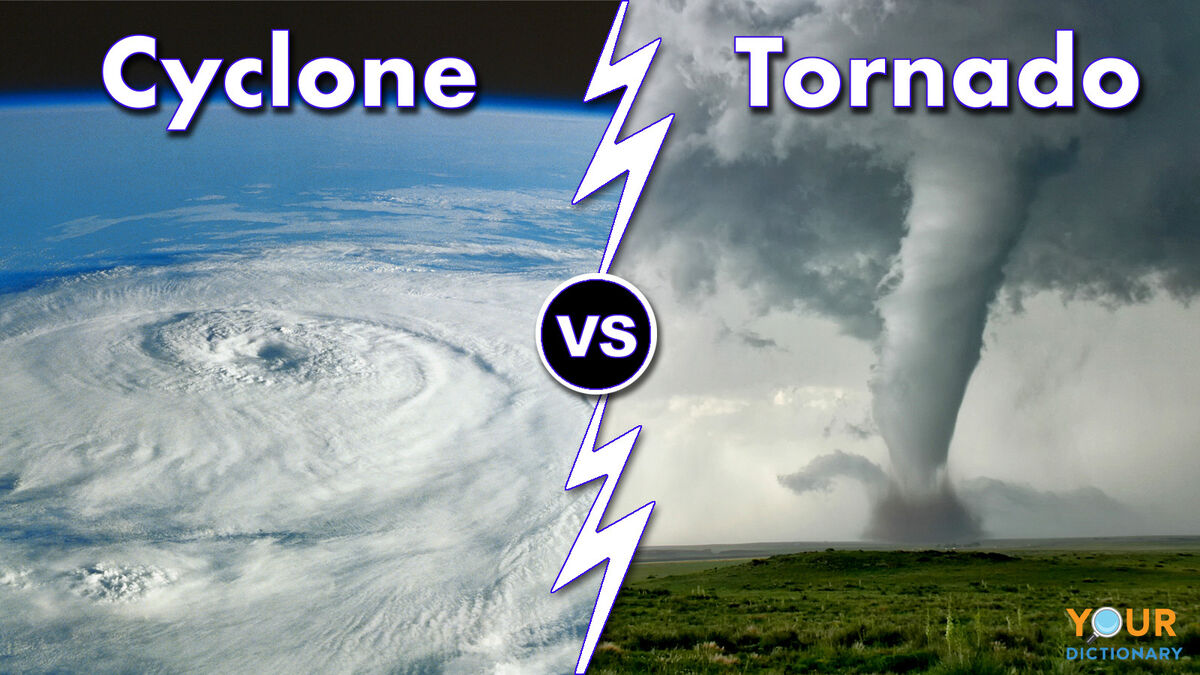What is the Difference Between a Cyclone and a Tornado?
If you’ve ever heard the terms cyclone and tornado, you may have wondered if there is any difference between the two. While both cyclones and tornadoes are powerful weather phenomena, they do have distinct characteristics. In this article, we will explore the key differences between cyclones and tornadoes, helping you to better understand these awe-inspiring weather events.
What is a Cyclone?
A cyclone is a large-scale weather system that rotates counterclockwise in the Northern Hemisphere and clockwise in the Southern Hemisphere. Cyclones are characterized by closed, low-pressure centers and strong winds that spiral towards the center. These weather systems can vary in size, ranging from a few hundred kilometers to several thousand kilometers in diameter. Cyclones can last for several days or even weeks, and they typically form over warm tropical or subtropical waters.
What is a Tornado?
A tornado, on the other hand, is a small-scale, violent rotating column of air that extends from the base of a cumulonimbus cloud to the ground. Unlike cyclones, tornadoes are typically formed during severe thunderstorms. These destructive twisters are characterized by their funnel shape and by the powerful winds that accompany them. Tornadoes can vary in size, with some being just a few meters wide and others exceeding a kilometer in width. They generally last for a few minutes to a couple of hours.
Key Differences
While both cyclones and tornadoes involve rotating winds, there are several key differences between them:
Size and Scale
One of the main differences between cyclones and tornadoes is their size and scale. Cyclones are much larger and cover a vast area, often spanning several hundred kilometers. Tornadoes, on the other hand, are relatively small in comparison and typically have a diameter of less than a kilometer.
Formation
Cyclones form over warm tropical or subtropical waters, whereas tornadoes form within severe thunderstorms. Cyclones require warm ocean waters to provide the energy needed for their formation, while tornadoes form in an environment where there is a clash between warm, moist air and cold, dry air.
Duration
Cyclones are long-lasting weather systems that can persist for several days or even weeks. Tornadoes, on the other hand, are short-lived and usually last for only a few minutes to a couple of hours.
Damage Potential
While both cyclones and tornadoes can cause significant damage, tornadoes are well-known for their destructive power. Tornadoes have the potential to produce extreme winds exceeding 300 miles per hour (482 kilometers per hour), resulting in widespread destruction and loss of life. Cyclones, although powerful, typically produce less intense winds and cause damage primarily through storm surge and heavy rainfall.
Frequently Asked Questions
What is the main cause of cyclones and tornadoes?
Cyclones are usually caused by warm ocean waters providing energy to the system, while tornadoes form within severe thunderstorms due to a clash between warm, moist air and cold, dry air.
Can tornadoes occur during a cyclone?
Yes, tornadoes can occur during a cyclone. When the conditions are right, the rotation within a cyclone can spawn tornadoes within its outer bands or in the vicinity of the storm system, adding an additional layer of danger.
Which is more dangerous, a cyclone or a tornado?
While both cyclones and tornadoes can be dangerous, tornadoes are generally considered to be more destructive and life-threatening due to their intense winds and localized impact. Cyclones, on the other hand, are known for their large size and the potential for widespread damage caused by storm surge and heavy rainfall.
Where are cyclones and tornadoes most common?
Cyclones are most common in tropical or subtropical regions around the world, such as the Atlantic, Pacific, and Indian Oceans. Tornadoes are most common in the United States, particularly in an area known as “Tornado Alley,” which includes parts of the central United States.
Final Thoughts
In conclusion, while both cyclones and tornadoes involve rotating winds, they have distinct differences. Cyclones are large-scale systems that form over warm tropical or subtropical waters and can last for several days or weeks. Tornadoes, on the other hand, are small-scale, violent storms that form within severe thunderstorms and typically last for only a few minutes to a few hours. Understanding these differences can help us better appreciate these powerful natural phenomena and be better prepared when severe weather strikes. Stay safe and keep an eye on the weather forecast!
